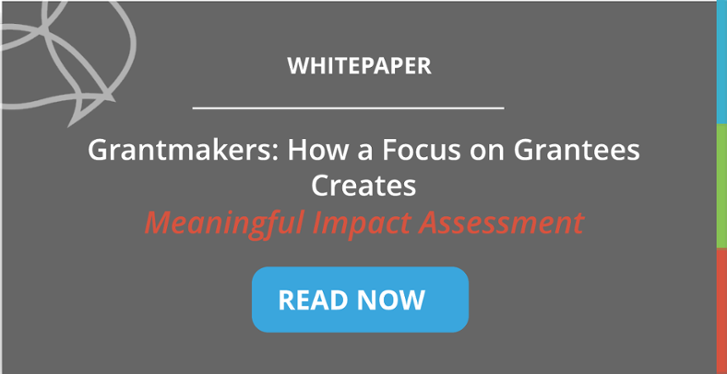
Measuring impact is challenging. There’s no two ways about it. Some funders skip important steps in development while others fail to pay enough attention to their grantees’ capacity or preferences when designing and implementing evaluations. What’s more, the variety of approaches to the work across the sector constrains the way organizations assess and even define impact.
Given the challenges, it’s important that funders approach measuring impact as an iterative process of continuous learning. Measuring impact should be a “conversation” between the funder and grantee, one that values both sides of the equation and creates a space for a shared commitment to ongoing knowledge transfer.
Despite the variety and even disagreements about measuring impact, the approach seems to be catching on. According to a Center for Effective Philanthropy report, most foundation leaders believe that the key to understanding whether grant money and nonprofit efforts are fulfilling the foundation’s mission lies at philanthropy's very foundation: the people a grant serves and the organizations that carry out that work.
By building a two-way relationship with grantees and valuing grantee voices, funders are far more capable of being flexible, responsible, and committed to continuous learning — traits that foster more meaningful ongoing impact measurement.
Benefitting from this approach doesn’t happen without some mindfulness and hard work. To make the most of the collaborative, grantee-centered approach organizations need the following:
- Collaboration and engagement
First and foremost, using this approach requires collaboration and engagement between funders and their grantees. Sharing their individual goals and preferences and finding ways to identify or create alignment allows for a more meaningful and appropriate plan.
These conversations can alleviate the burden on foundation and grantee staff, as well as make the process of collecting, sharing, and analyzing data more efficient, collaborative, and informative.
- Appropriate technology
We now have the technology to be able to efficiently and meaningfully relay information from the grantee back to the funder. Discussions between funders and grantees need to address not only what data to collect, but also how they will collect and share data. These conversations should include considerations of the capacities of grantees to conduct and share the data, including technology infrastructure, systems, and procedures.
- Commitment
Technology isn’t the silver bullet. What’s arguably most important to a successful grantee-funder collaboration is that the team is committed to making it work. Reworking how foundations measure impact involves change — and depending on how a foundation has done this in the past, that could mean small tweaks or a noticeable shift. Make sure all team members know what goal they’re working toward and why it matters; it’s their commitment and follow-through that will make the new approach successful.
While the heavy lifting involved in this undertaking should not be discounted, the benefits of valuing grantee voices and committing to continuous learning greatly outweigh the challenges of making it happen.
When faced with opportunities to improve precision and confidence in the work, alleviate the burden, and expand impact and learning across the philanthropic sector, it’s incumbent on all of us to act for the good of the people and causes who are working so hard to make a change. For a deeper dive into the benefits of this grantee-centered approach download our whitepaper, Grantmakers: How a Focus on Grantees Creates Meaningful Impact Assessment.
